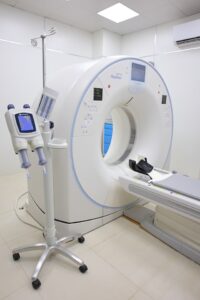English is the international language of science and technology. Those who do not speak English as their native language, however, may have enough English to get by in conversations but not understand subtle differences with synonyms, homophones, and complex sentence structures. This is where Simplified Technical English (STE) shines.
What’s the history of STE?
In the late 1970s, the Association of European Airlines (AEA) asked the European Association of Aerospace Industries (AECMA, now ASD) and the Aerospace Industries of America (AIA) to explore the existing languages in their manuals. Their goal? Make aircraft maintenance documentation more readable for those with limited English skills. At this time, the aviation industry had grown so quickly and so large that civil aircraft manufacturers were abundant. While that doesn’t seem like a problem, they each created technical documentation in their native languages, then translated them into English. These aircraft were sold to airlines around the world, who then became responsible for their ongoing maintenance.
To add to the confusion:
- Individual authors used their own distinct writing styles.
- Every procedure was different for various models of aircraft.
- Some airlines translated documentation into other languages themselves, from documents that had already been translated into English.
- Manuals were poorly written and infamous for overcomplicating tasks.

Can you imagine trying to use a manual that confused the people who wrote it, was translated at least twice, and contains overcomplicated directions? (Some of us remember such computer documentation from the 20th century.) These problems became more and more concerning for the airlines, who pushed for better writing standards across the industry.
So, these aerospace groups released the AECMA Simplified English Guide in 1986, which later became ASD (Aerospace and Defense Industries Association of Europe) Simplified Technical Engineering Specification (ASD-STE100), the industry standard STE dictionary and guide. The dictionary contains about 900 allowed words and the guide includes 65 writing rules.*
This groundbreaking new “language” was so successful that other industries adopted it. Interest continues to dramatically increase in several areas, including language services, professional translation, interpretation, and academia.
What are the advantages of using STE?
We’ve touched on some of the advantages of writing in STE format, but here are more:
- Reduced ambiguity. Using STE reduces the risk that the end user will misunderstand the writer’s intended meaning. STE text is much easier to read and understand than English, especially since English has its own idiosyncrasies between native speakers depending on their location. STE is the same for anyone, native English speaker or not.
- Accurate and cost-effective translation. STE makes translation easier and faster – for either human or machine – due to a limited vocabulary and simple sentences. Non-STE writing often leads to problems with translations that need to be fixed in re-translations, which can cause delays in deliverables. Using STE also decreases the size of a document by about 20 percent, thereby decreasing translation services simply by offering fewer pages to translate.
- Improved reusability. When an author uses STE to write documentation, their standard approach means it will be easier to reuse that same text across documents. Long-term savings. While STE training and implementation may be costly at first, companies see results over the long haul. Production costs are reduced as content becomes easier to maintain and reuse. The number of peer reviews before publication decreases, and fewer editorial changes are needed in updates. Documents are more uniform no matter the number of writers involved.
- Improved comprehension. STE improves text comprehension for both native and non-native English speakers. The same is true for locating specific content in long documents. People are more likely to use manuals that are easy to understand, which may translate to fewer injuries and less time spent on a project.
What are the disadvantages to using STE?
You probably already realize that STE is not suitable for general and other types of writing. A few reasons include:
Little creativity. STE offers few options, which decreases inconsistency among writers. However, it also makes documentation less interesting to read.
- Repetition. The intention of STE is to be repetitive to improve reading comprehension and save authoring time. On the flip side, documents written to STE standards are difficult to use across departments: STE documents will not (at least they SHOULD not) be used as marketing or sales materials.
- US English. STE generally uses American English. Authors from the UK and other English-speaking locations may find it hard to adopt.
How are writers trained in STE principles?
STE requires both excellent knowledge of English and the subject. Without proper training, writers often focus on the dictionary of words allowed and not the writing rules. Both are equally important. In fact, just handing a writer a copy of STE specs and thinking that’s all they need is one of the best ways to DISCOURAGE them from learning and applying STE. One needs to completely understand the STE rules. Thus, STE training is the first step.
Ask yourself a few questions to help you find a trainer:
- Does anyone in your company or industry know the trainer or can they share experiences with that trainer?
- Does the trainer have experience in your industry?
- How long has the trainer worked with STE?
- Who trained the trainer, and when?
- Does the trainer have references?
- Is the trainer willing to adapt the course to your needs?
Do any case studies prove that using STE is worth the hassle?
Etteplan, a developer of a popular STE checker, helped client Elekta implement their own version of STE.
 What does Elekta do?
What does Elekta do?
Elekta is a medical device company creating clinical solutions for treating cancer and brain disorders. They develop software products that streamline all activities in a clinic, from diagnosis to treatment to follow-up.
Elekta was dealing with growing pains:
- Both organizational and technological changes hit Elekta at about the same time.
- Growth, acquisition, and the changing regulatory market created new opportunities for and pressures on the company.
- Internal issues drove the need to take advantage of new technologies for user documentation creation.
Major issues drove the need for change.
- Too many words! Unnecessary information caused translation costs to escalate. In two years, the total number of words translated was 5,459,906, and 1,855,959 were from the last three months of that time.
- Information became difficult to maintain, reuse, and comprehend.
- Different versions of the same information existed across different documents.
- Foreign language users found the content difficult to use.
How did Elekta fix the problem?
Elekta, like some other large organizations, developed their own version of STE by creating Elekta Approved Simplified English (EASE).
What is a real-life example of Elekta’s success in using STE?
A clinical team and a writer collaborated on a user manual restructure. They had to ensure all the new functionality was included while improving the overall quality and customer experience. The result:
- 21 percent reduction in pages
- 8 percent reduction in words
- 66 percent savings in cost of goods due to a lower print cost per manual
- “This is indeed a great achievement. Well done and sincere thanks to the team.” – Senior Vice President in Oncology Business Line Management, Electa.
We have tons of documents to translate into STE. How should we attack this monumental project?
Delete non-relevant information
Technical content not written in STE tends to include additional information simply not helpful to the end user who needs to complete a task. To remove this text, ask yourself, “Does the user need this word/information to complete the task?” If not, remove it.
Example:
- “The synthetic lubricating oil used in this engine contains additives which, if allowed to come into contact with the skin for prolonged periods, can be toxic through absorption.” There’s information here that is not necessary to get across the point that the oil can be dangerous.
- “The oil used in this engine, if allowed to contact the skin, is toxic through absorption.” This sentence is much more direct about informing the reader that the oil can be toxic if it gets on one’s skin.
Use approved words
Clear and concise writing is essential for technical documentation. One word might mean something different to you than it does to the reader, or the word itself may not be assertive enough, like using “should” instead of “must.” Avoid ambiguous sentences that are open to interpretation.
Example: An airplane aborted a landing after the pilots realized there was a vehicle on the runway. The vehicle was a snowplow, whose operator had been told to “clear the runway” for the arrival of the aircraft. The plow operator thought he was supposed to literally clear the runway of snow, but his supervisor meant that he should leave so the plane could land.
Simple sentence structure
Keep sentences short. The recommended maximum for a sentence is 20 words in a procedural sentence, 25 in a descriptive sentence. Don’t stop there, though. Even a short sentence with more than one instruction of topic does not follow STE standards, particularly when writing about procedures. Instead, split sentences into single points. Also, don’t use three nouns in a row.
Example:
- “Literally, sustainable development refers to maintaining development over time, although by the early 1990s more than 70 definitions of sustainable development were in circulation, definitions that are important, despite their number, because they are the basis on which the means for achieving sustainable development in the future can be built.” Could you tell someone else what this sentence means after one reading? Probably not.
- “Sustainable development refers to maintaining development over time. However, by the early 1990s, more than 70 definitions of sustainable development were in circulation. Despite their number, these definitions are important because they are the basis on which the means for achieving sustainable development in the future can be built.” Breaking all that information into shorter sentences allows for easier reading comprehension.
Do not use the passive voice.
Always use action verbs in STE writing.
Example:
- “The screws should be replaced.” This sentence invites questions: Who is replacing the screws? Do they have to be replaced or can I put it off until the next maintenance?
- “The technician replaces the screws.” The reader knows whose job it is that replacing the screws is not an optional task.
What are some best practices for creating clear, consistent documentation?
- Clear and concise language. Use simple straightforward language that is easy to understand. Avoid jargon and unnecessary descriptions and complexities.
- Include visuals. Flow charts, diagrams, illustrations, and other visuals help clarify difficult concepts and improve readability. Readers more easily understand the process for their task, as well as the various components they are using.
- Consistency. Develop a consistent format and style for all technical documentation in your organization. Doing so promotes standardization, which helps employees navigate documentation much easier.

What STE tools and resources are available?
Several tools exist to help you apply STE to your writing. We’ve listed a few below. The list is not comprehensive, nor do we recommend any particular one:
- Boeing developed Boeing Simplified English Checker (BSEC) specifically for its needs. Based on the original STE dictionary, BSEC uses a complex 350-word English parser that is augmented with special functions that check for STE violations.
- Congree offers an STE Checker based on linguistic algorithms and supports all rules of STE that are relevant to text composition. It also provides an integrated STE dictionary.
- Etteplan offers its HyperSTE checker that analyzes your document for STE usage and suggests changes.
Implementing STE can be difficult. In fact, there are so many stringent rules that it’s like learning a new language. Native English writers may take a long time to adapt STE fully, and achieving compliance can be costly. If your documentation needs to be engaging and interesting, STE might not be your best option. Fully implementing STE may not be necessary for your company’s needs, but including some of their principles in your writing guidelines can help create documentation that is easier to write, translate, and understand.
*Download your free copy of ASD-STE100 Specification, Issue 8, April 30, 2021 here. This is the most recent update of the STE dictionary. They request your email, then send you a short form to fill out. After you send it back, they will quickly send you the dictionary.
Do you need to create more user-friendly manuals and instructions but do not have the time or staff to incorporate STE standards? Our technical writers can help! Contact us today to learn more about how using our writers can save you time and money!
Related Blogs
Understanding the Standards of Technical Writing
7 Technical Writer Myths: Fact or Fiction?
Write Now: Stay Ahead with the Latest Technical Writing Trends
Resources
Anastasia. “Simplified Technical English (STE): Rules and Examples.” ClickHelp. 4/9/22. Accessed 6/12/23. https://clickhelp.com/clickhelp-technical-writing-blog/what-is-simplified-technical-english
ASD-STE100. Accessed 6/12/23. https://www.asd-ste100.org
Augustin, Olivia. “What is Technical English?” Marcode. 11/8/21. Accessed 6/14/23. https://www.marcode.org/blog/036
Courses on Simplified Technical English, Specification ASD-STE100. Accessed 6/12/23. https://www.uninettunouniversity.net/en/asd-ste100.aspx
Elomaa, Jonna. “Why Simplified Technical English (STE) is worth looking into?” LinkedIn. 5/12/19. Accessed 6/12/23. https://www.linkedin.com/pulse/why-simplified-technical-english-ste-worth-looking-jonna-elomaa
“2013 02014017 04 EASE A Case Study on the successful implementation of Simplified Technical English.” Etteplan via YouTube. 2015. Accessed 6/14/23. https://www.youtube.com/watch?v=Yk0P6fUC320
Fredborg, Isabelle. “Process Documentation: Definition & Best Practices.” Helpjuice. 3/28/23. Accessed 6/12/23. https://helpjuice.com/blog/process-documentation
Simplified Technical English training. Mekon Aerospace and Defence team. Accessed 6/12/23. https://aerospace-defence.com/index.php/tech-pubs/services/training/simplified-technical-english-asd-ste100-training
Sing, Shreelekha. “6 Proven Technical Documentation Best Practices to Make it Work.” Scribe. 8/26/22. Accessed 6/12/23. https://scribehow.com/library/technical-documentation-best-practices
Vermeulen, Ferry, MSc. “How to Implement Simplified Technical English and Write Clearer Documentation with the Thumbs Up Technique (Part 1/3).” ProComm. 4/1/16. Accessed 6/14/23. https://procomm.ieee.org/how-to-implement-simplified-technical-english-and-write-clearer-documentation-with-the-thumbs-up-technique-part-13
“What is Simplified Technical English?” 3di. Accessed 6/12/23. https://3di-info.com/what-is-simplified-technical-english





